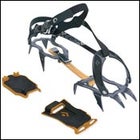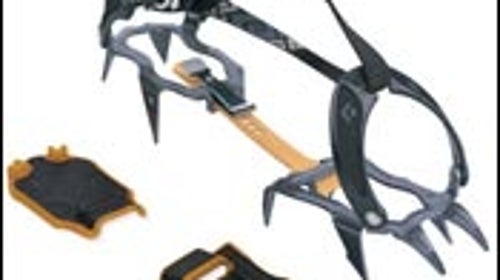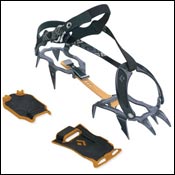You know, it really depends on the individual. Speaking broadly, I much prefer to see people in full-coverage, ankle-height footwear. I simply believe the support is better, the foot protection (especially in the sole) is better, and the traction is better. Trail-runners are trail-runnersrunning shoes in drag. Compared with hiking boots, theyre shorter, lighter, and have softer midsoles.
Black Diamond’s Contact Strap crampons
 Contact Strap Crampons
Contact Strap CramponsThat said, plenty of people hike in trail-runners and do just fine. On good trails, with light loads, Id let the health of your ankles be your guide.
And sure, you can put crampons on trail-runners. What you need is a set of crampons with somewhat traditional straps. s Universal XLC 490 crampons ($125) are moderately aggressive 12-point crampons with a strap system that allows them to fit over nearly any kind of footwear. Theyre also very lightweight, so they wont feel too clunky on trail-runners. s Contact Strap crampons ($120) are nearly identical.
For slippery but non-technical snow, ice, or even steep grass, makes whats called an instep” cramponthink, crampons minus the toe points. The Crab 6 ($75) is a light six-point crampon that also will fit over most any shoe.
The 2008 Summer ���ϳԹ��� Buyers Guide is now online. From riding to trail-running to camping, get reviews of nearly 400 gear must-haves.


